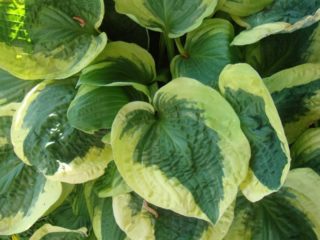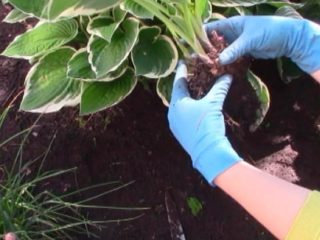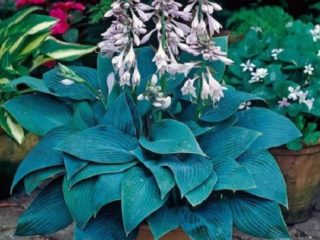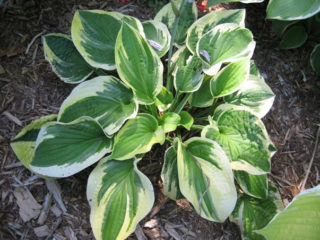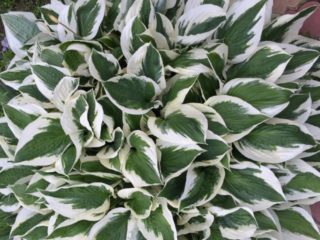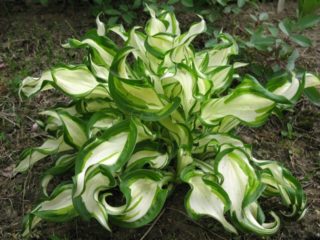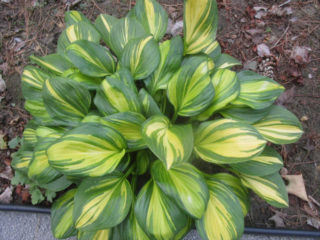Content
Hosta Albopicta is popular both among professionals and people taking their first steps on the path of gardening. The plant highlights the contrasting color of the leaves against the general background, and one of its advantages is the ability to cultivate the variety in shady areas of the garden.
Description of Hosta Fortune Albopicta
In the botanical reference books of the world, the hosta “Albopicta” is called in Latin as “Hosta fortunei Albopicta”. This culture has been known since the 19th century, thanks to two botanists: Nikolaus Host and Heinrich Funk. Each of the scientists studied the plant, however, the first description of the Albopicta hosta was made by the Austrian Host, in whose honor the variety received its name. Initially, hosta was cultivated only in large botanical gardens, but over time it ended up in private collections of breeders. Today you can find hosta “Albopictu” in dachas and garden plots in central Russia, despite the fact that its habitat is considered to be Southeast Asia, Japan and the Far East.
The culture is a perennial herbaceous plant, reaching a height of 40 to 70 cm and growing with a diameter of up to 80 cm.The leaf blades of Hosta Albopicta are elongated, heart-shaped, glossy, with a slightly wavy leaf structure. They can reach 35-30 cm in length. Initially, the leaves are characterized by a yellowish-green tint with a darker edging along the edge of the plate. Towards the end of the summer, the leaves acquire a more uniform dull green hue.

The leaves of the plant can change color
The inflorescences of Hosta "Albopicta" are presented in the form of bells of a pale purple palette, which are located on a high peduncle. The height of the latter is 60-70 cm. Flowering begins in the first ten days of July. Ends in the last weeks of August.
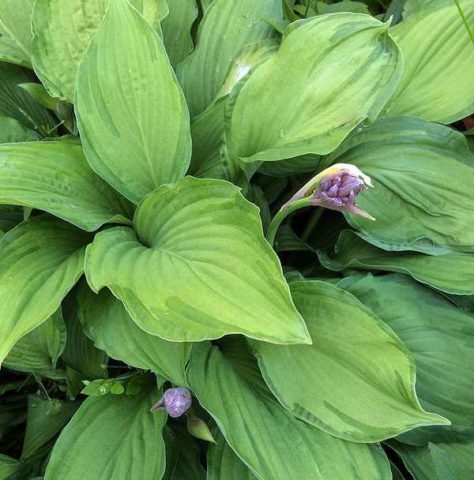
Hosta inflorescences are in the form of bells and funnels, have different colors
Hosta is classified as a shade-tolerant plant with low light requirements. One of the advantages of this variety is its ease of care. Hosta "Albopicta" is a variety with a slow growth rate. In the first 2 years, the color of the leaf blades of the variety does not have its own specific color. The leaves acquire their original texture only in the 3rd year.
Plants of the Fortune species are known for good frost resistance. They can easily tolerate low temperatures down to -35 °C, which, combined with their unpretentiousness, makes them an ideal option for the middle zone and northern regions.
The following advantages of the Albopicta hosta can be highlighted:
- low lighting requirements;
- unpretentiousness;
- relatively high degree of growth;
- decorativeness;
- simplicity of agricultural technology.
Disadvantages include modest flowering in the form of pale bells and average plant height.
Application in landscape design
Hosta “Albopicta” can very organically fit into the garden “interior”, which is what landscape designers use.
Bushes over 60 cm high are planted individually. They are completely self-sufficient and do not require additional surroundings. The plants also look good in the area of artificial reservoirs (ponds, pools) and harmoniously coexist with other types of moisture-loving crops.
When choosing “partners” for hosts, you should focus not only on agrotechnical requirements, but also on the color of the plants. Contrasting compositions of yellow-green “Albopicta” and bright pink peonies look especially impressive. A successful tandem is created by hostas with flowering astilbes in lavender or burgundy shades. The slightly rough stonework of the flowerbeds only emphasizes the charm and simplicity of this plant. The culture is also organic in combination with bright garden geraniums.
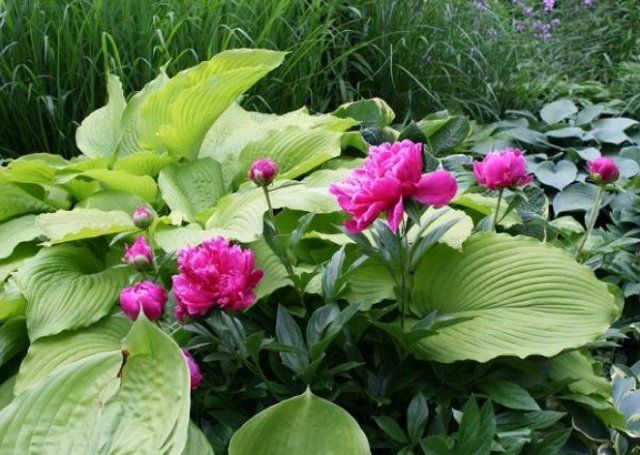
The plant is successfully used to decorate borders, paths and garden paths.
Low-growing hostas can create a beautiful environment for variegated daylilies. Leaves with a gradient look great against the background of coniferous plants. In shady areas, Albopictu can be combined with fern and thuja.
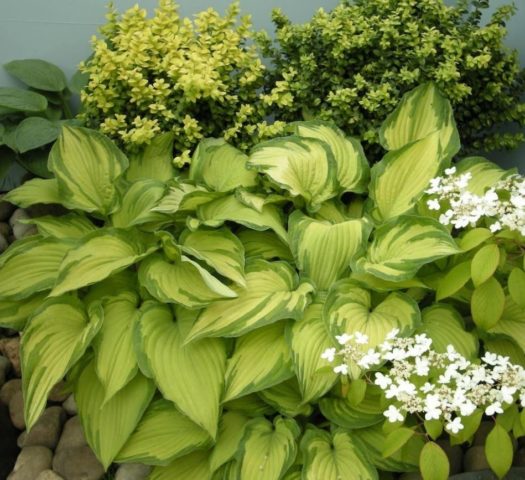
Hosta is planted individually or in groups near artificially created reservoirs and in flower beds.
Hosta of this species often acts as a ground cover plant. To achieve a similar effect, “Albopictu” is planted at the rate of 4-5 seedlings per 1 m².
Reproduction methods
You can propagate hostas yourself. To do this, as a rule, 3 methods are used:
- propagation by seeds;
- division;
- cuttings
The first method is more labor-intensive and is used in most cases by breeders.The seeds are soaked in the stimulator, after which they are placed in tightly compacted soil to a depth of 5-7 mm and covered with perlite. The optimal temperature for sowing and germination of Hosta Albopicta is +20 °C. The first shoots can be observed on the 14-15th day.
The most popular method is division. This method is used for 4-5 years after planting the plant in the ground. The bushes are divided in the spring, selecting the required number of “divisions”. In this case, you don’t even need to dig up the main plant. The main condition is not to damage the uterine bush. Planting material is planted at the same depth as the main hosta and actively watered until rooting.
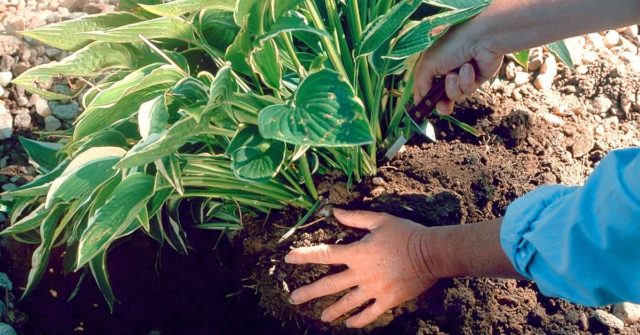
You can plant cuttings or “divisions” or use purchased planting material
Cuttings are carried out from mid-May to July. To do this, select young, easily separated shoots with small leaves. Leaf blades that are too large can be cut off by about a third. They are planted in the shade and also watered well until they take root.
Landing algorithm
Planting is carried out in the last months of spring or the first days of autumn. Hosta "Albopicta" is not demanding on the composition of the soil. However, it grows best on light, slightly moist loams with plenty of humus. At the same time, too high humidity negatively affects the growth of the crop.
Hosta feels good in shade and partial shade and is not afraid of light drafts. Planting material can be purchased at specialized nurseries or made yourself by dividing the mother plant.
The algorithm for planting hosta "Albopicta" is as follows:
- Form planting holes up to 22-25 cm deep.
- Fill each hole with a mixture of fertile soil and fertilizers (superphosphate, ammonium nitrate and potassium sulfate).
- Plant the crop so that the root collar is on the surface.
- Mulch everything with peat or sawdust.
Growing rules
Basic care for hosta "Albopicta" is not much different from standard agricultural technology. The lush bush also requires watering, fertilizing and pruning.
The Albopicta variety is classified as a moisture-loving variety. However, it is very important not to flood the hosts. The optimal solution in this situation would be well-organized drip irrigation. Water the crop under the bush, being careful not to wet the leaves, which have a thin waxy coating. After watering, the soil is carefully loosened.
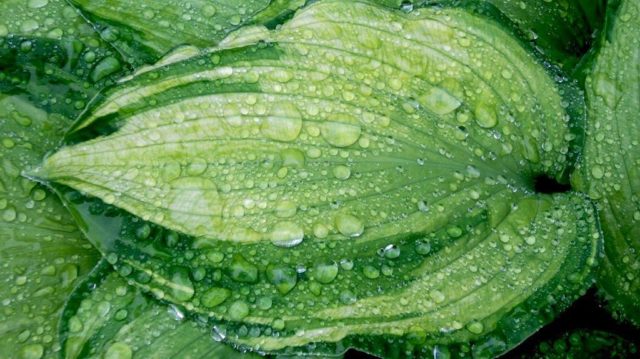
After planting, the host continues to develop for another 2 years, and only in the 3rd year does it acquire all the characteristic characteristics of the variety
The appearance of the crop depends on proper feeding: the color of the leaves, their elasticity, and the total green mass.
Fertilizers are applied to the bush in 3 stages:
- In spring, the crop is fertilized with a large amount of nitrogen complexes, which stimulate growth and development.
- In summer, mineral complexes are added, for example, “Osmokot” and easily digestible chelates, which affect the intensity of the color of the leaves.
- In the fall, before wintering, the Albopicta variety is fed with phosphorus and potassium.
Mulching is necessary to regulate soil moisture and create good air conditions for the hosta root system.
The following is used as mulch:
- crushed bark;
- agrotextiles;
- leaves and dry grass;
- pine needles;
- crushed cones;
- peat.
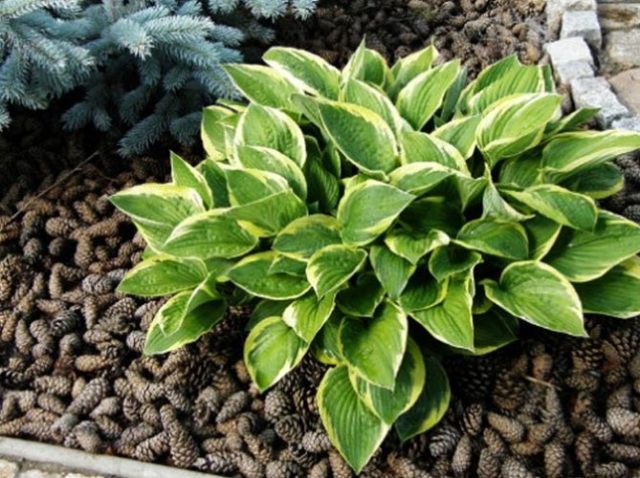
Mulch provides the plant with nutrition and protects the soil from drying out.
Caring for the Albopicta hosta is simple and does not require much time.
Preparing for winter
The Albopicta variety is frost-resistant. However, in the northern regions it is still necessary to take measures to cover the plant.
Most experts are confident that there is no need to prune bushes before wintering. However, some gardeners still prune as soon as all the leaves of the hosta turn yellow.
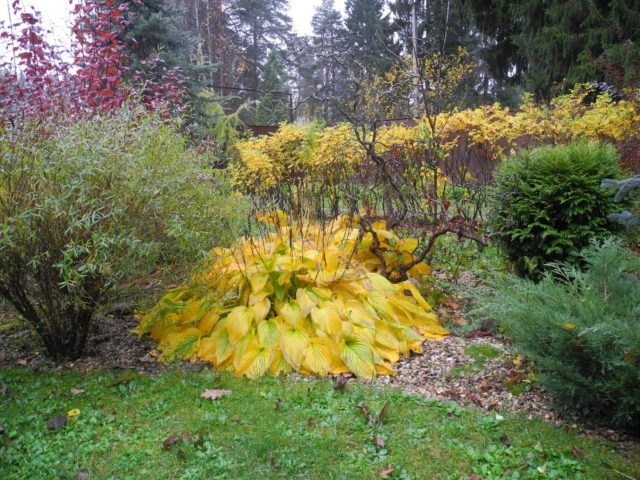
The plant is replanted only at the end of spring
At the end of autumn, the last feeding is organized. The fertilizers used must contain phosphorus and potassium. Good options are ready-made mineral complexes or a mixture of potassium sulfate and superphosphate. Followers of organic farming use natural bone meal and wood ash.
In the middle zone there is no need to completely cover the Albopicta hosta. It is enough to mulch the soil in the area adjacent to the bush. In the northern regions, agrofibre can be used.
Diseases and pests
In the heat, Albopictu is often attacked by spider mites. A sign of its presence on the plant are curled leaves. As a means of control, you can use drugs such as Fitoverm, Actellik or Akarin.
Another enemy of the Albopicta hosta is snails. They are controlled using mini-fences, barley husks, wood ash and stone flour. Bioslimax is suitable for biological products.
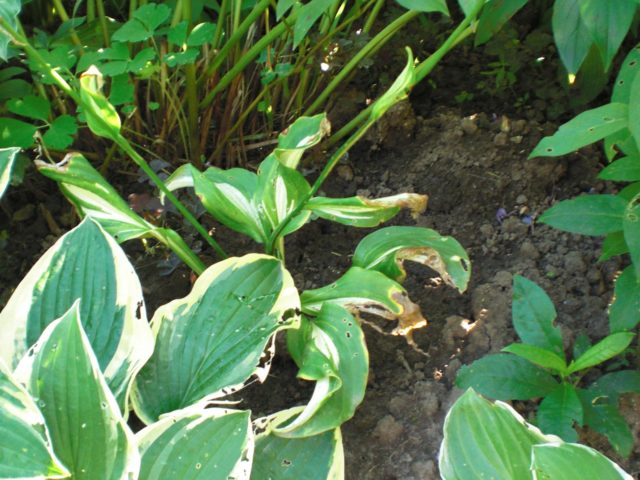
To prevent insect attacks, you can sprinkle the bushes with tobacco or ash in the spring.
Unprotected hosts are susceptible to infection by powdery mildew or anthracnose. For prevention, the leaves are treated with “Quadris”, “Skor”, “Match” and “Aktara”.
In 1996, the HVX virus was discovered in Minnesota (USA), which infects all hosta varieties. It is transmitted through plant sap, pollen or insects, and the incubation period takes several years. The virus cannot be treated, so the diseased culture is simply destroyed.
Conclusion
Hosta Albopicta is an unpretentious lush plant that can decorate any garden plot. Its high frost resistance allows it to be cultivated not only in the middle zone, but also in the Urals and Siberia.
Reviews
Most reviews about the Albopicta variety are positive.
https://www.youtube.com/watch?v=AhIb2rVYc30&feature=emb_logo
